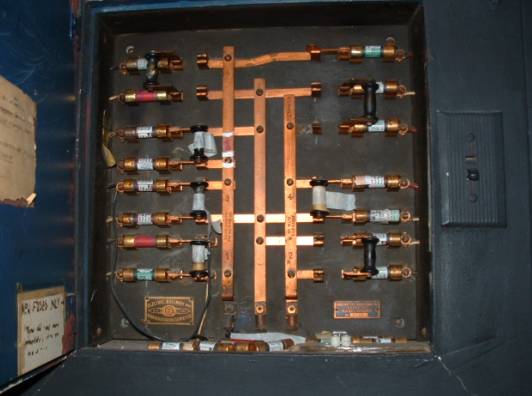|
|
This topic comprises 2 pages: 1 2
|
|
Author
|
Topic: Proper line grounding
|
|
|
|
|
|
|
|
|
|
|
|
|
|
|
|
|
|
|
|
|
|
|
|
|
Steve Guttag
We forgot the crackers Gromit!!!

Posts: 12814
From: Annapolis, MD
Registered: Dec 1999
|
 posted 11-05-2008 09:34 PM
posted 11-05-2008 09:34 PM




I'm amazed by the general misunderstanding associated with ground and grounding practices.
No, it isn't the "balanced" part that kept your noise down...it was that the wire was TWISTED AND BALANCED. A true balanced circuit that electrically isolated off ground (like transformer based), will be pretty noise immune (receiving noise) if the wires have a reasonably tight twist. Since in a balanced circuit you have a "differential" input (and it is the input that is key), the way to keep noise out is to ensure that whatever induced noise is forced to cross BOTH wires in the differential system (hence the twisting). As such, if both wires are equally affected, you will get common mode rejection of the induced noise. The world is not a perfect place, one wire will get more noise than the other and it will be measurable, though it may be insignificant.
Shielding provides an electrstatic shield for both the wires on the inside as well as keeping the noise generated by the signal itself from radiating out too.
If lifting ground, at either end improves the system, you didn't find a soluiton, you identified a problem...sure the quick and easy way is to leave the shield lifted but you have not achieved as good a system as is potentially possible.
Since the chief noise in analog audio is hum...floating one end is the easiest thing to do and is, in fact, common practice by most folks.
For higher frequency stuff (video)...one has to shield at both ends if one wants the noise to drain.
Good grounding practices really have to start with the design of the room. If it isn't done right at the start, you will eventually be chasing your tail trying to get it better and better but never truly achieve it best performance. A proper ground DEPENDS on zero current flow. You can't get around Ohm's Law...if current flows through any conductor (building steel)..there WILL be a voltage drop, which translates into "ground loop."
Some of the more "hummy" systems I've seen have been caused by the installer's misguided efforts to "isolate" the ground/power. They have ground isolated outlets (thereby depending on "God knows who" electrician to make good/proper ground connections...all of the way to the ground rod of the system. They put gound bars in their racks and use those god-awful wire ladders to isolate the racks. They take all these precautions at the rack end...NEVER thinking about what is happening to the other end of that cable. It takes just ONE cable, via a piece of equipment connected to it at the other end to come into the "dirty ground" system to screw it all up.
I've done isolated racks...very isolated...the systems are incredibly quiet and noise free. The key is, controlling both ends of the cable to ensure the ground integrity is maintained. Note, the outlets in the rack were not isolated, but bonded to the rack itself, which was isolated and hardwire bonded to its own ground rod. If you can't control both ends of EVERY cable, better to be on a common ground system and ground often...to the point that you minimize the ground potential differences anywhere in the system.
For audio grounding, I refer you to Rane's excellent document Rane Note 151
As to transformers...can't beat em for isolation Frank. 7V differential...no problem...so long as you don't saturate the transformer, or burn up the coils, it is going to isolate the two coils because they are completely separate. It is one of my main lines of defense when I must integrate between my "Clean" system and "others" unknown system. Works every time.
Steve
| IP: Logged
|
|
Frank Angel
Film God

Posts: 5305
From: Brooklyn NY USA
Registered: Dec 1999
|
 posted 11-05-2008 10:40 PM
posted 11-05-2008 10:40 PM





Steve, all good points, and yes, in this particular situation we finally decided that starting from scratch was the only solution; we had to bite the economic bullet. Had them put in a real ground up the two storied directly to the room, and then spidered it out correctly to everything.
As for xformer balanced equipment -- absolutely, that's the primo way to go, but unfortunately, in this room lots of unbalanced stuff -- semi-pro and even consumer equip -- had to be part of the pie. Sometimes a completely balanced head-to-toe room just isn't in the cards.
7 volts differential, no problem? Maybe, but not recommended -- that's when we just said, why do it halfass, and we re-did everything.
| IP: Logged
|
|
|
|
|
|
All times are Central (GMT -6:00)
|
This topic comprises 2 pages: 1 2
|
Powered by Infopop Corporation
UBB.classicTM
6.3.1.2
The Film-Tech Forums are designed for various members related to the cinema industry to express their opinions, viewpoints and testimonials on various products, services and events based upon speculation, personal knowledge and factual information through use, therefore all views represented here allow no liability upon the publishers of this web site and the owners of said views assume no liability for any ill will resulting from these postings. The posts made here are for educational as well as entertainment purposes and as such anyone viewing this portion of the website must accept these views as statements of the author of that opinion
and agrees to release the authors from any and all liability.
|

 Home
Home
 Products
Products
 Store
Store
 Forum
Forum
 Warehouse
Warehouse
 Contact Us
Contact Us




 Printer-friendly view of this topic
Printer-friendly view of this topic













![[Confused]](confused.gif) .
.





